The fight for wildlife has started
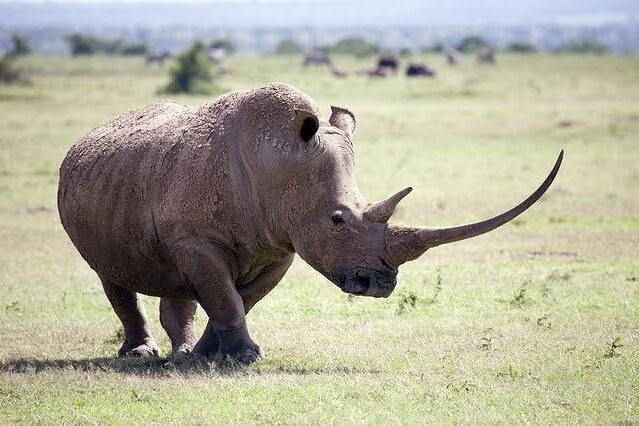
For millions of years, rhinos have roamed the Earth with their powerful horns and quiet strength. Yet today, they face one of the greatest threats of their existence, not from nature, but from humans. Here’s a closer look at the surprising reasons why rhinos are still being hunted, and the extraordinary ways people are fighting to save them.
1. Rhino horns have no magical powers, but they’re still worth more than gold

A rhino’s horn is made of keratin, the same protein that makes up human fingernails and hair. It has no medical or mystical properties, yet myths in some cultures continue to claim it can cure everything from fever to hangovers. In certain circles, it’s even ground into powder for use as a luxury party drug or displayed as a symbol of wealth and status. This false belief has created a thriving black market where rhino horn is valued at more than gold or cocaine, fueling a dangerous international trade. Tragically, this demand has turned rhinos into targets for criminal networks that treat them as a quick path to fortune rather than living creatures vital to our planet’s ecosystems.
2. Poachers are armed like soldiers and act like ghosts

Modern rhino poachers are no longer simple hunters, they operate like highly trained military units. Equipped with night vision goggles, helicopters, silencers, and dart guns, they can track and kill a rhino with chilling efficiency. Some even employ corrupt veterinarians to sedate the animals before cutting off their horns. In many cases, the crime takes less than 15 minutes, leaving almost no trace behind except a lifeless body on the savanna. These operations are often backed by organized crime groups, making them difficult to stop. Rangers on the ground face a dangerous cat-and-mouse game against poachers who use advanced technology to stay one step ahead, creating an ongoing battle for survival in Africa’s protected reserves.
3. The horn alone can sell for over $400,000

A single rhino horn can fetch more than $400,000 on the black market, often making it more valuable than its weight in gold or platinum. This staggering price tag explains why poachers are willing to risk their lives and freedom to get one. The profits are so high that horn trafficking has become a key income source for global crime syndicates, funding everything from illegal arms to drug smuggling. For local communities struggling with poverty, the temptation of quick money also drives some individuals to cooperate with poachers. The sheer financial incentive makes the illegal horn trade one of the toughest wildlife crimes to stop, as it continues to lure new players into a business that thrives on destruction.
4. Baby rhinos are often left alive beside their dead mothers
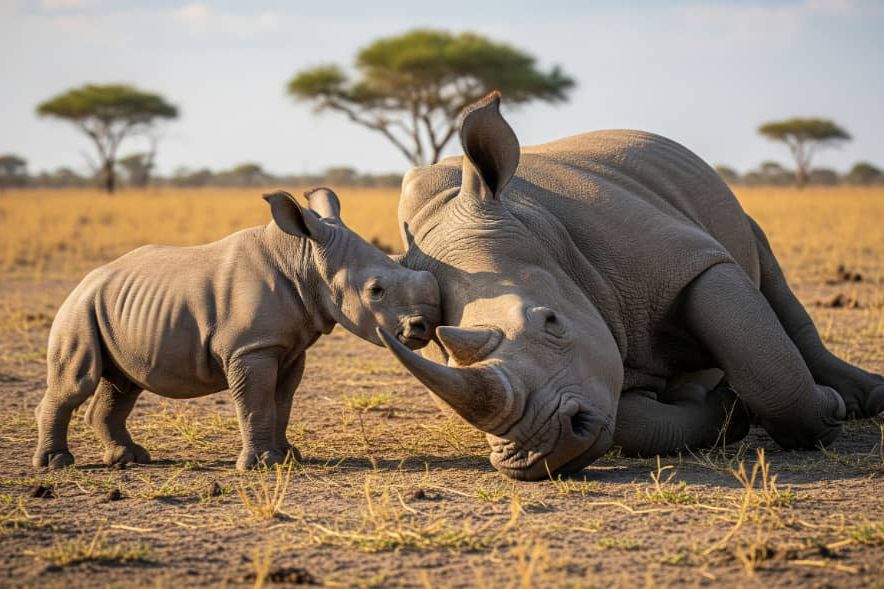
One of the most heartbreaking realities of rhino poaching is that calves are often left standing beside their slain mothers, confused and traumatized. These orphaned babies are too young to survive on their own, making them vulnerable to predators, starvation, or even heartbreak from losing their mothers. To help, specialized rhino orphanages have sprung up in countries like South Africa, where caretakers bottle-feed the calves, provide them with round-the-clock care, and slowly rehabilitate them. Many of these baby rhinos grow strong enough to be released back into the wild, but the emotional scars are lasting. Their stories have helped raise awareness about the cruelty of poaching, reminding the world that the victims are not only the adults killed for their horns but also the young lives left behind.
5. South African scientists are making horns radioactive on purpose
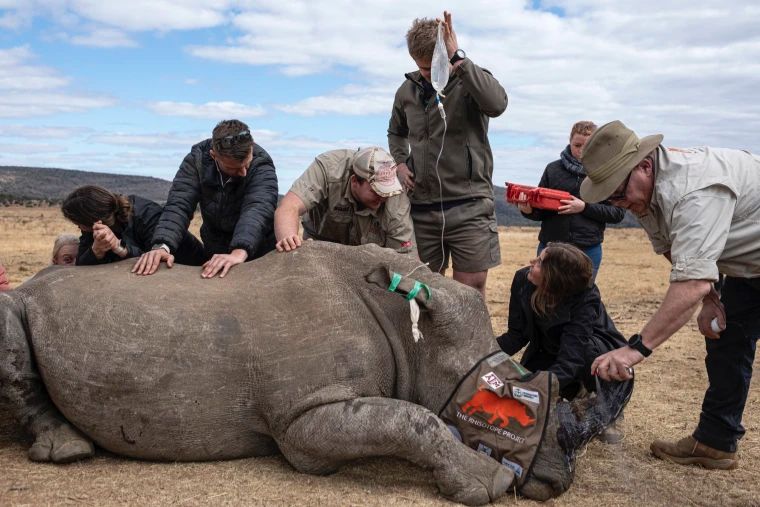
In a bold attempt to deter smugglers, scientists in South Africa have begun injecting rhino horns with harmless radioactive tracers. The idea is simple but powerful: it makes horns easily detectable at airport scanners, creating a huge risk for anyone trying to move them across borders. The process does not harm the rhino in any way, but it makes the horn virtually worthless to traffickers who know they can be caught instantly. To make rhino horn trafficking riskier, scientists have developed a DNA profiling system for every horn. By taking samples from live rhinos, they can create a genetic “fingerprint” that ties each horn to its original animal. If a horn is later seized at a border checkpoint or overseas market, investigators can trace it back to a specific reserve or even a crime scene. This evidence has become a powerful tool in court, helping prosecutors convict poachers and traffickers who might otherwise escape justice. It also acts as a deterrent, since criminals now know that a horn can incriminate them years after the crime.
6. In high-risk zones, rangers are removing horns to save lives
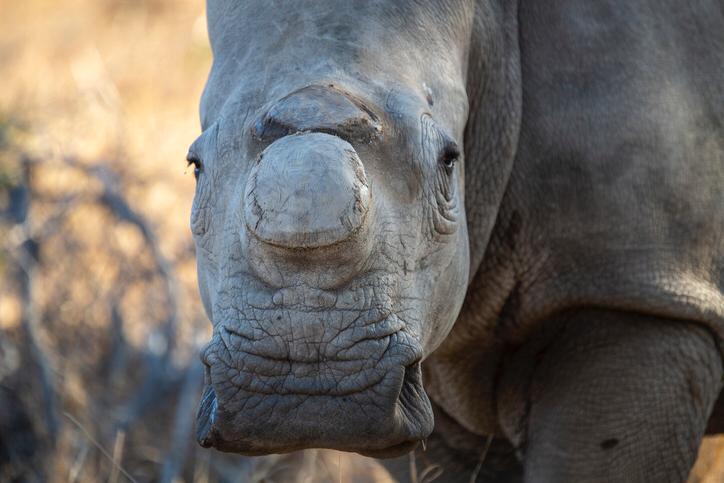
In some reserves, conservationists have turned to the heartbreaking but effective strategy of removing rhino horns themselves. By safely trimming the horns, similar to cutting human nails, rangers make the animals less attractive to poachers. While it doesn’t stop all threats, it has dramatically reduced killings in certain high-risk areas, especially in Namibia and South Africa. The procedure is done under anesthesia and doesn’t harm the rhino, but it must be repeated every few years since horns grow back. Critics argue that it’s a drastic measure, but supporters see it as a temporary shield until stronger protections and reduced demand can take hold. For now, it’s one of the few strategies keeping rhinos alive where poachers are relentless.
7. AI-powered drones and robot rhinos are patrolling the skies and grasslands
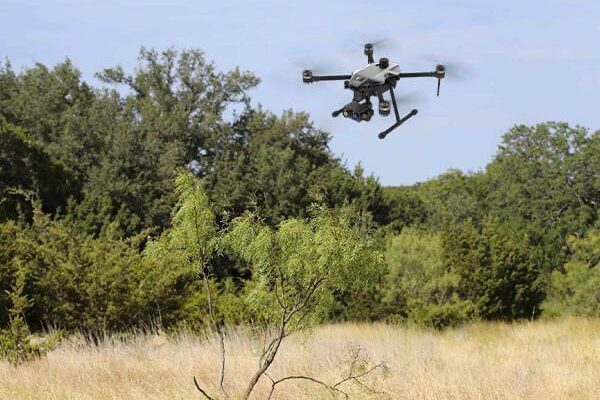
Technology is now joining the fight to protect rhinos. Conservationists are deploying AI-powered drones that can fly silently over reserves, spotting illegal activity in real time and sending alerts to rangers. On the ground, researchers have even built life-sized robotic rhinos equipped with hidden cameras to monitor herds and detect poachers. These tools act as extra sets of eyes in vast landscapes where human patrols can’t always keep up. By combining artificial intelligence with old-fashioned boots on the ground, rangers are gaining a critical edge in their daily struggle against poaching. It’s a futuristic approach that shows how far people are willing to go to safeguard one of the planet’s most ancient creatures.
8. Rhino populations are actually rebounding in a few key places
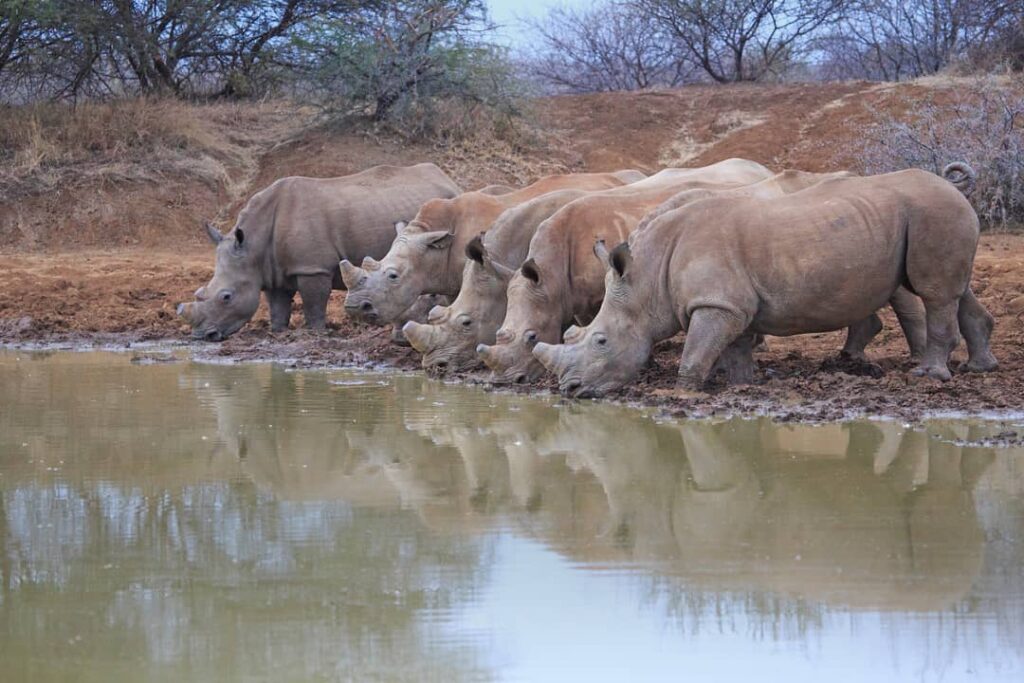
Despite the grim headlines, there is hope. In countries like Nepal and Botswana, dedicated conservation efforts have led to remarkable success stories. Nepal has celebrated multiple years with zero rhino poaching thanks to strong community involvement, strict law enforcement, and political support. Botswana’s parks, with their vast protected areas and well-trained rangers, have also seen steady growth in rhino populations. These victories prove that with enough willpower and resources, poaching can be stopped. They also serve as inspiration for other regions still struggling, showing that rhinos can thrive again when humans commit to protecting them. Each success story offers a glimpse of what’s possible if global efforts continue to expand.
9. Two species are nearly gone, but scientists are fighting to bring them back
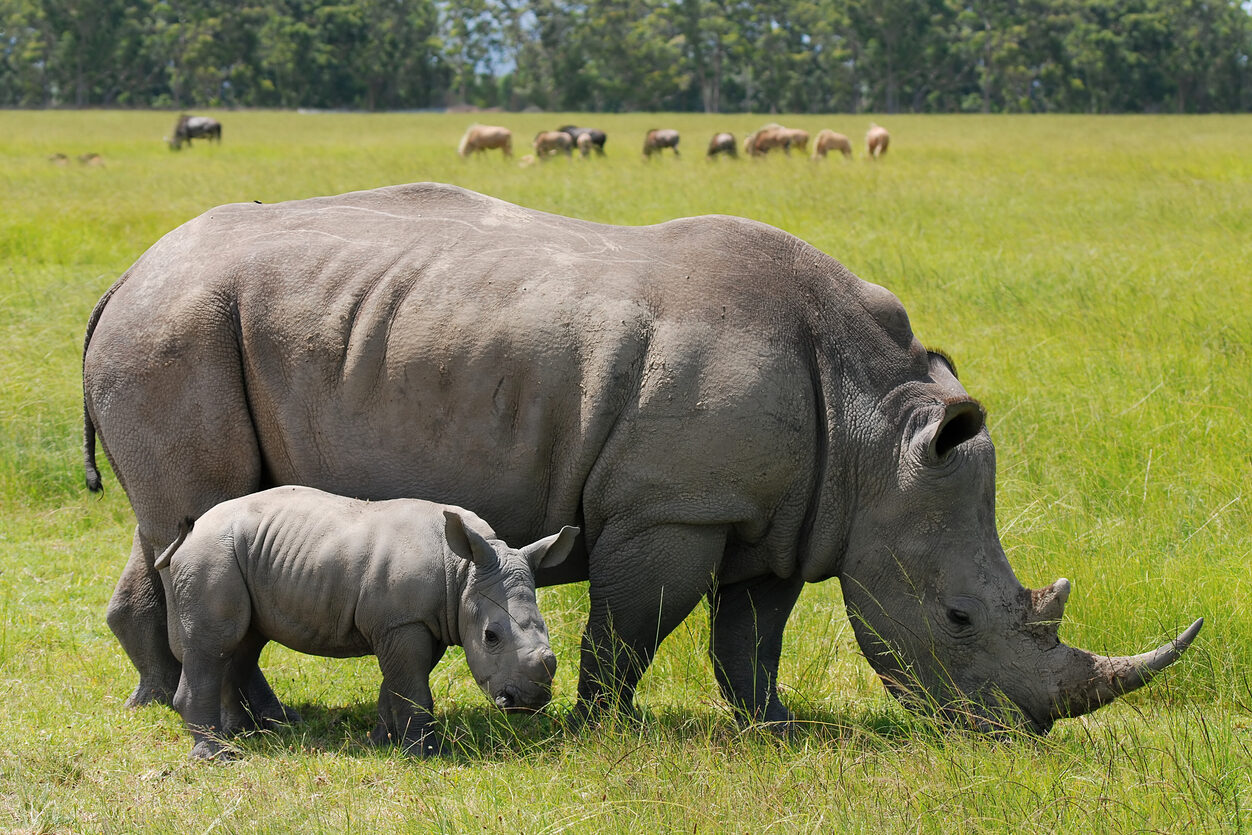
The northern white rhino is one of the most tragic examples of what poaching and habitat loss can do. Today, only two females remain alive, both living under heavy guard in Kenya. With no males left, natural breeding is impossible. But scientists are working tirelessly to save the species through advanced reproductive technology, including stem cell research and lab-grown embryos. While the process is still experimental, it represents one of the boldest conservation efforts ever attempted. If successful, it could not only bring back the northern white rhino but also provide a blueprint for rescuing other critically endangered species. It’s a race against time, but one filled with extraordinary determination and hope.
Their survival is not just about saving a species, it’s about preserving the balance of nature and ensuring that future generations inherit a world where these magnificent animals still roam free.
This story 9 Shocking Truths About Why Rhinos Are Still Being Hunted, and the Wild Ways We’re Fighting Back was first published on Daily FETCH


